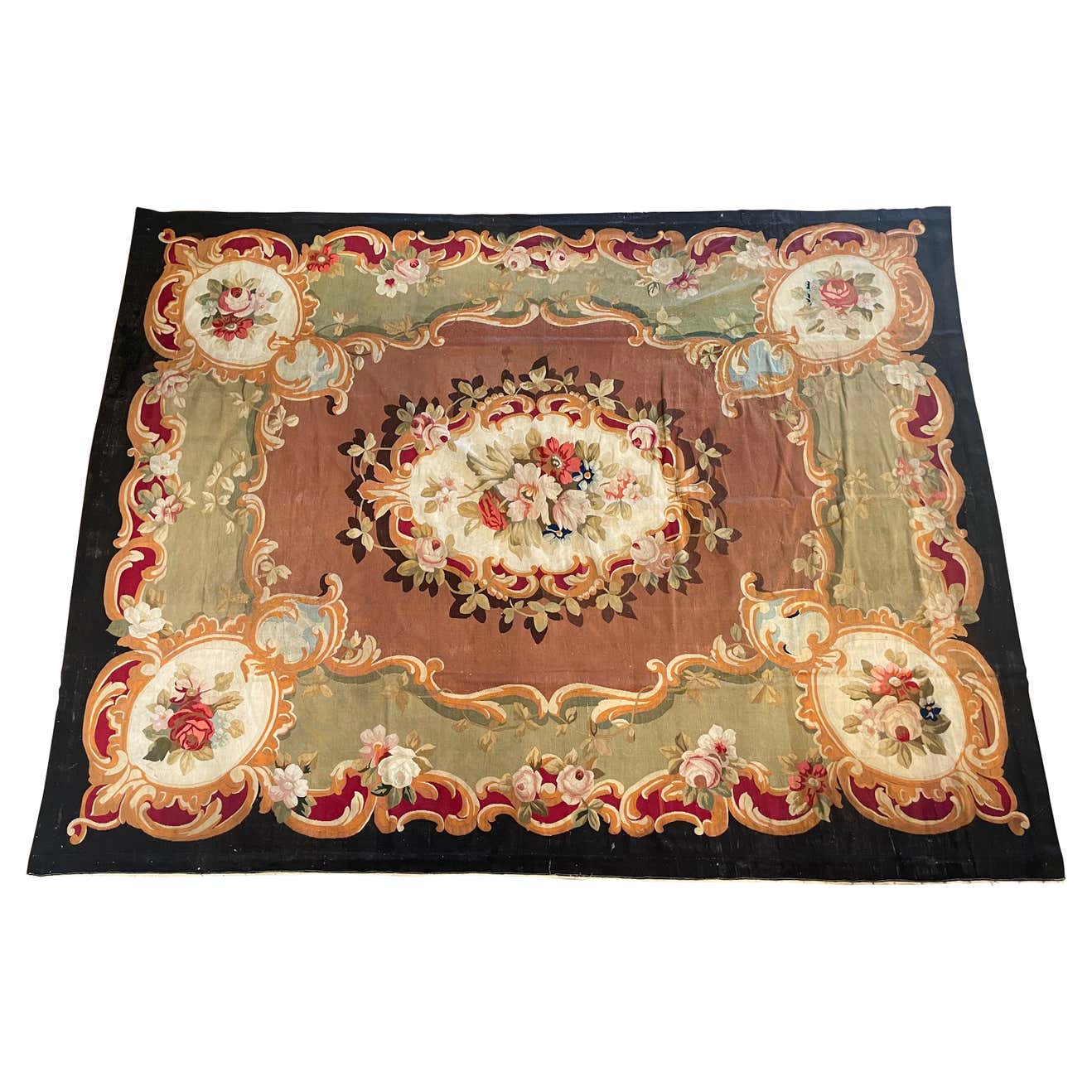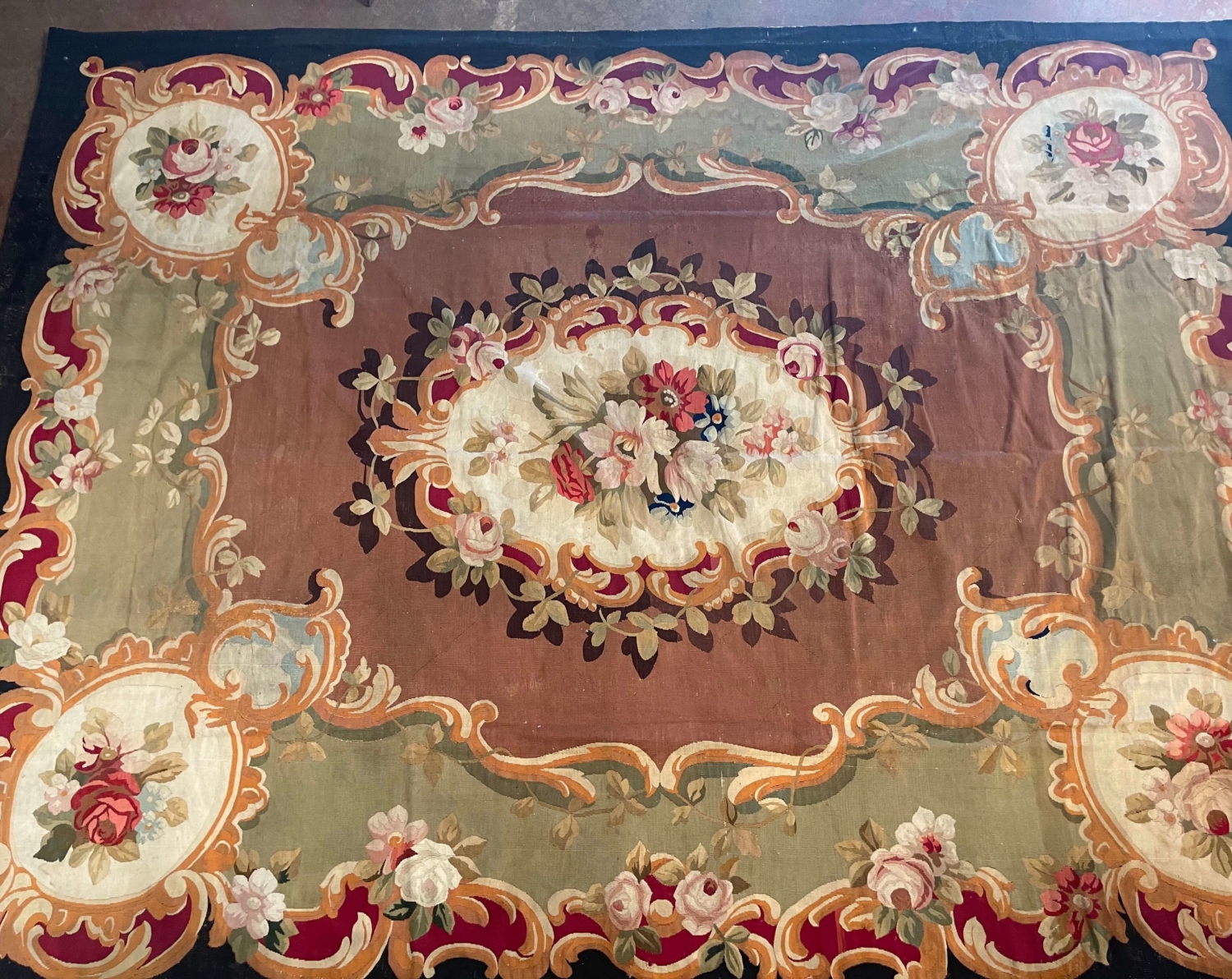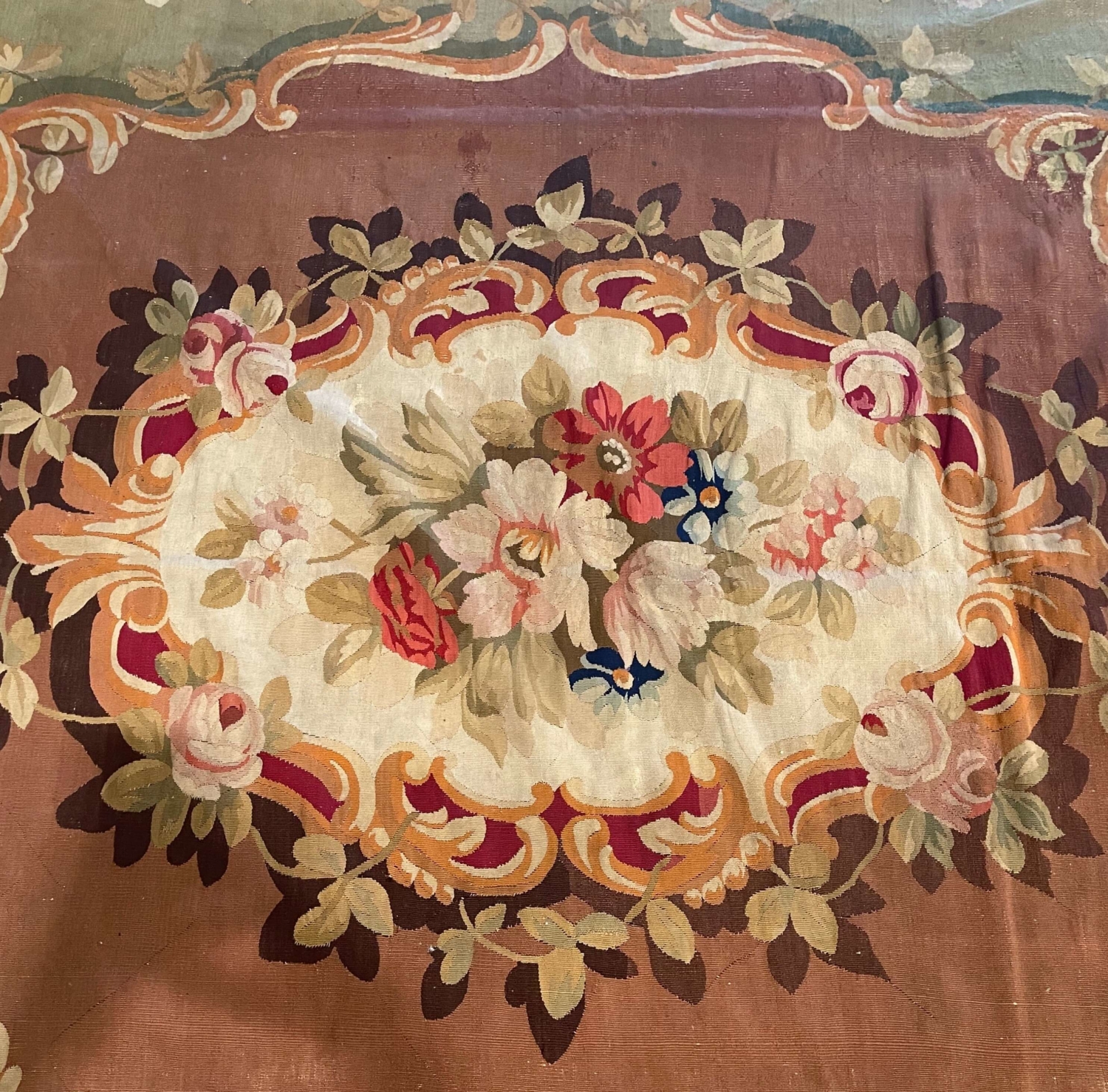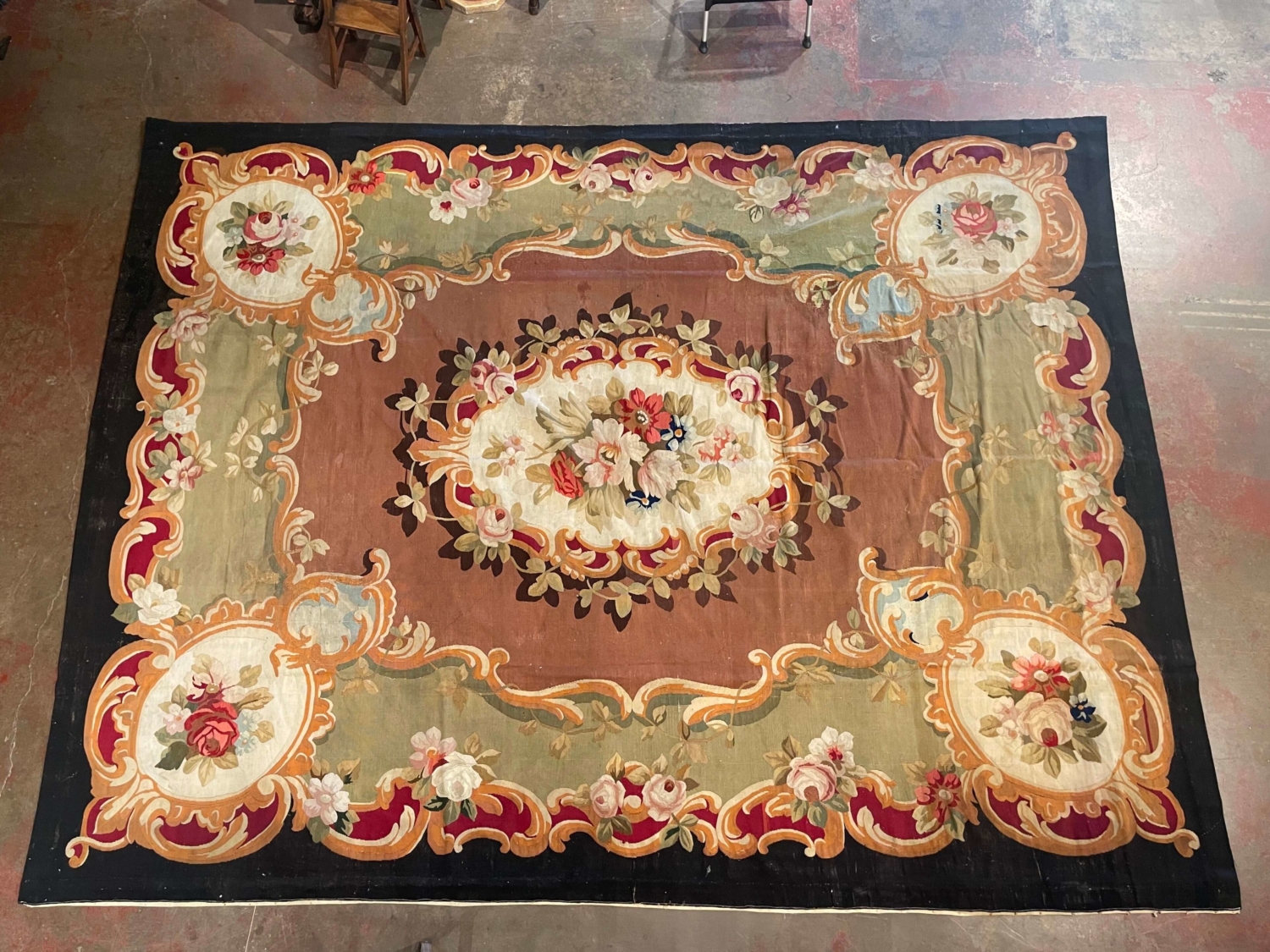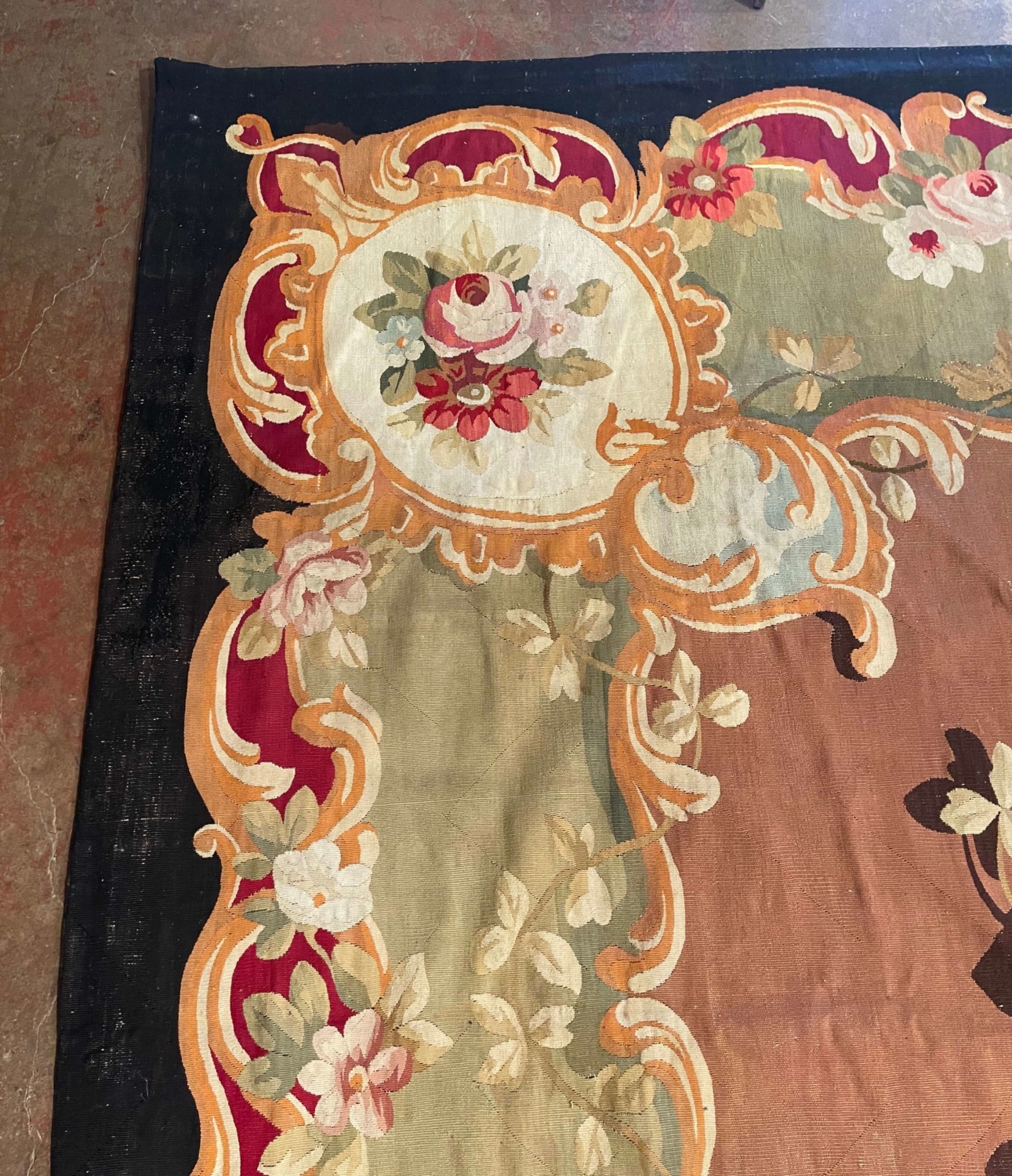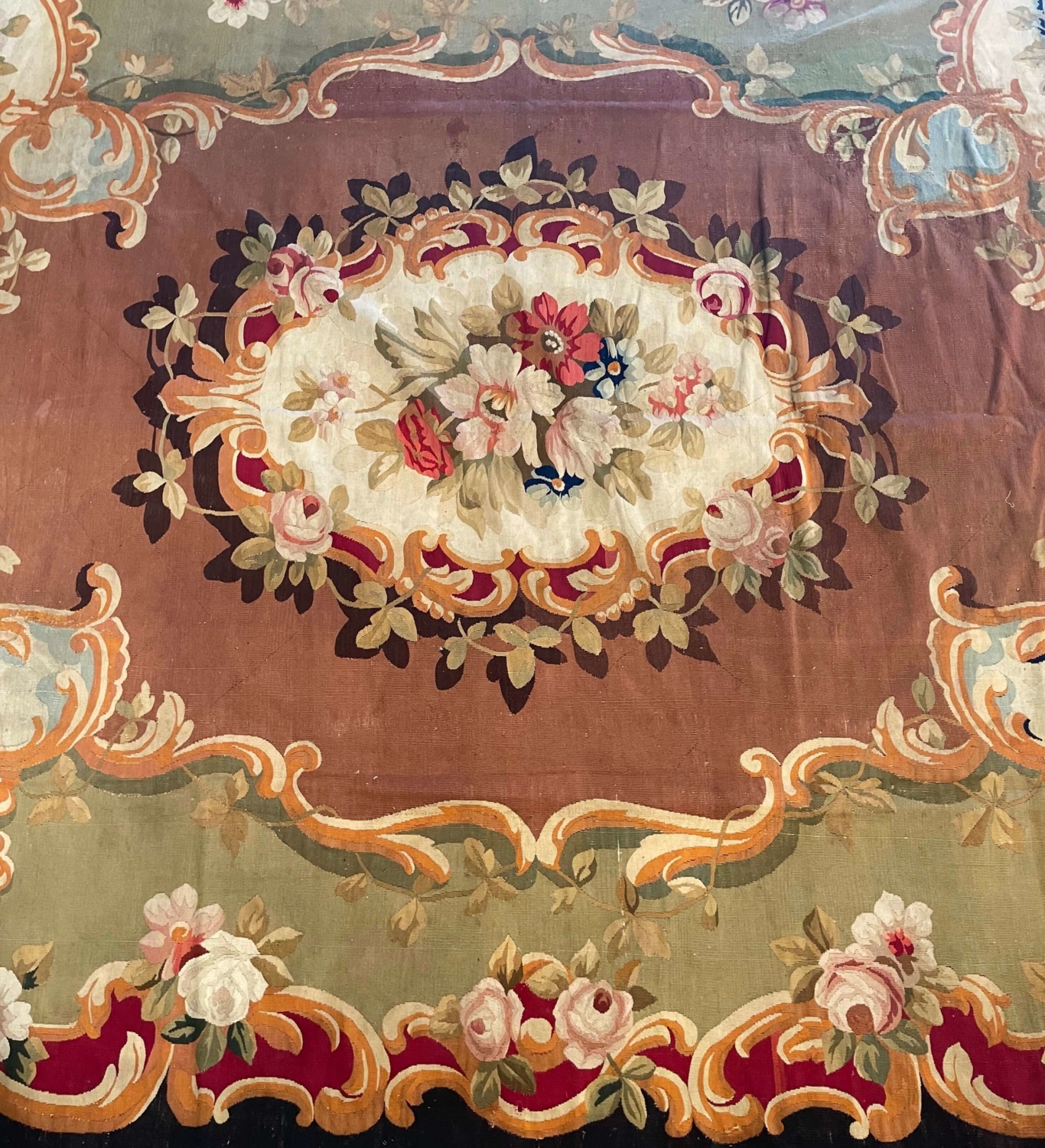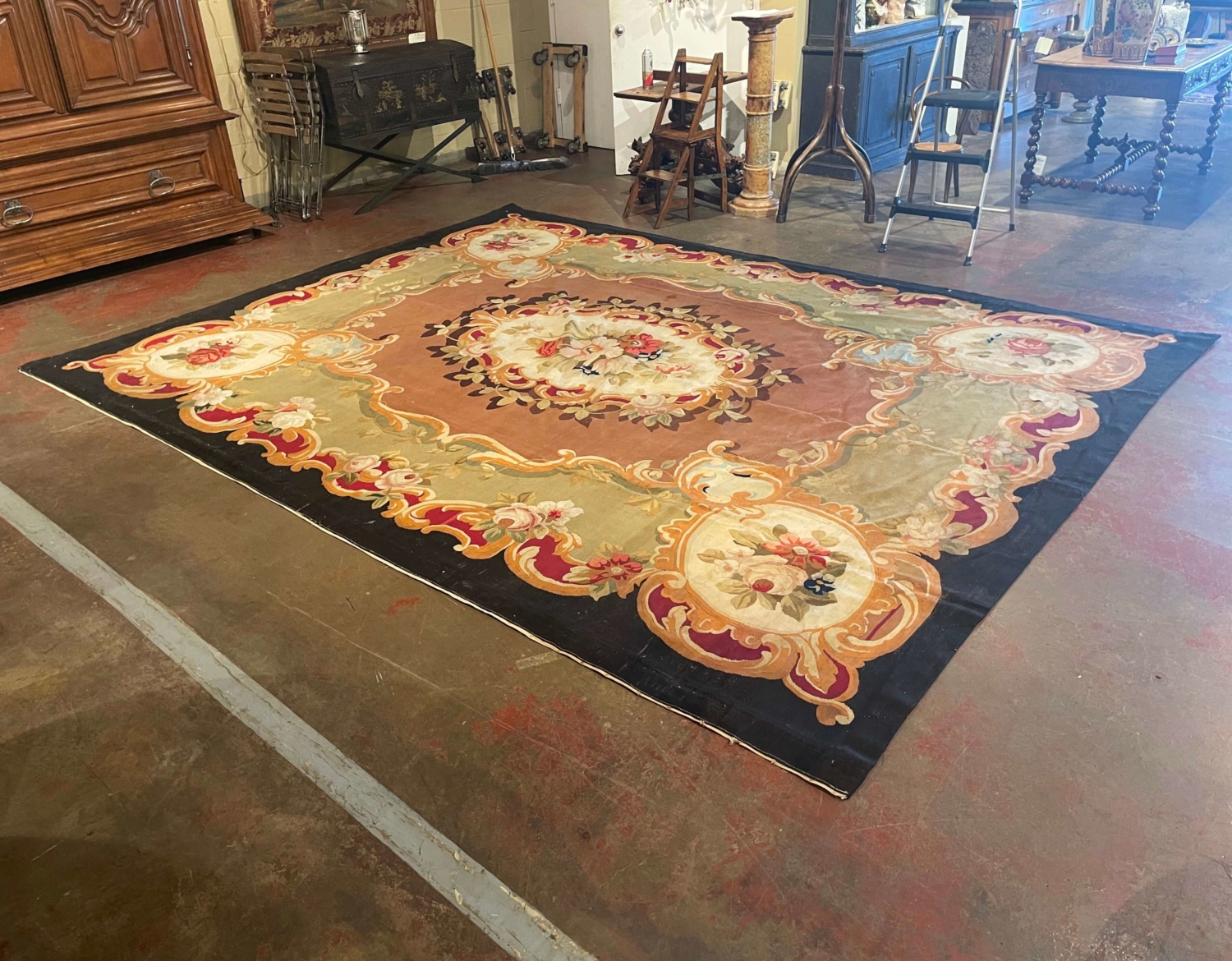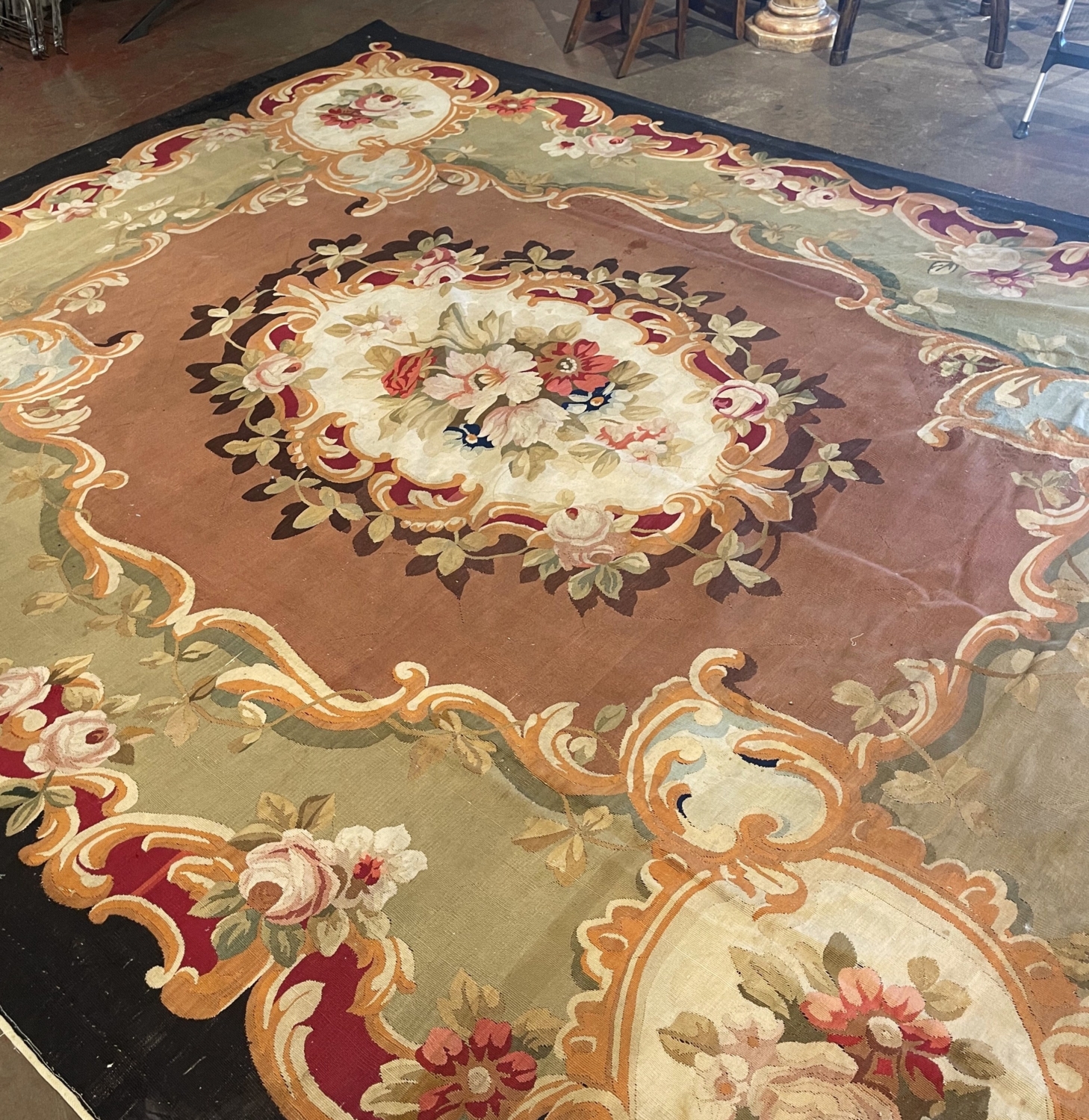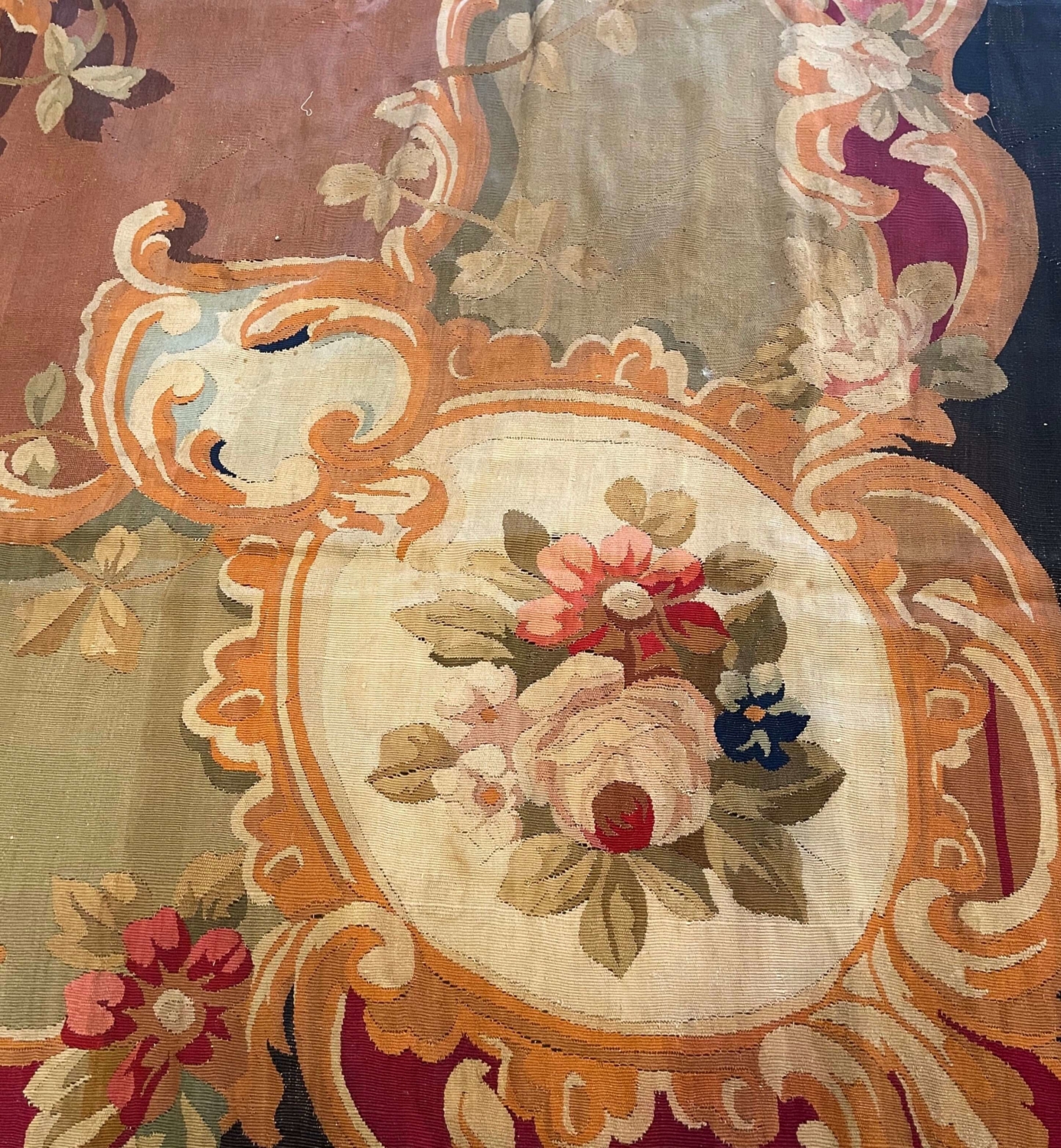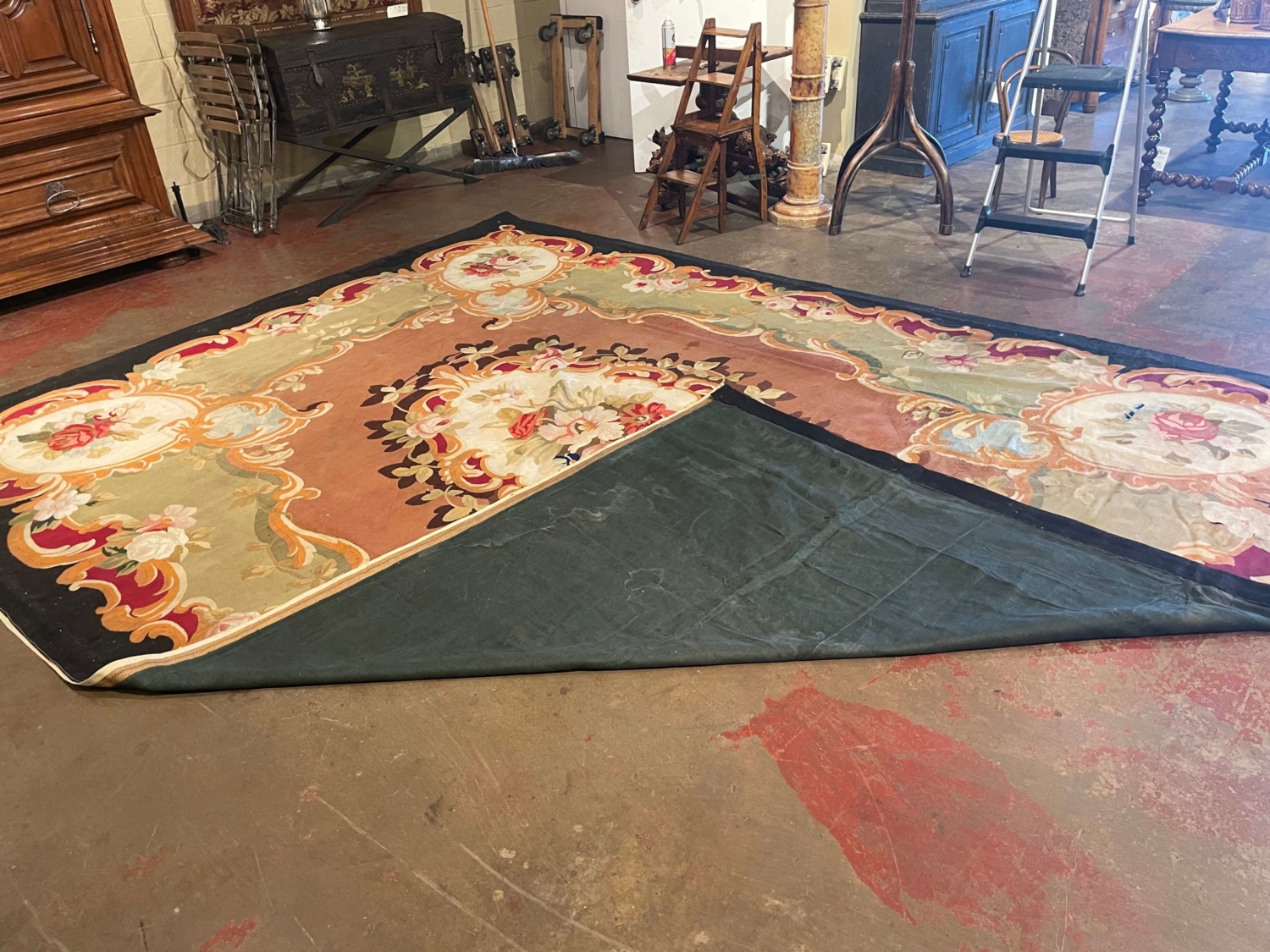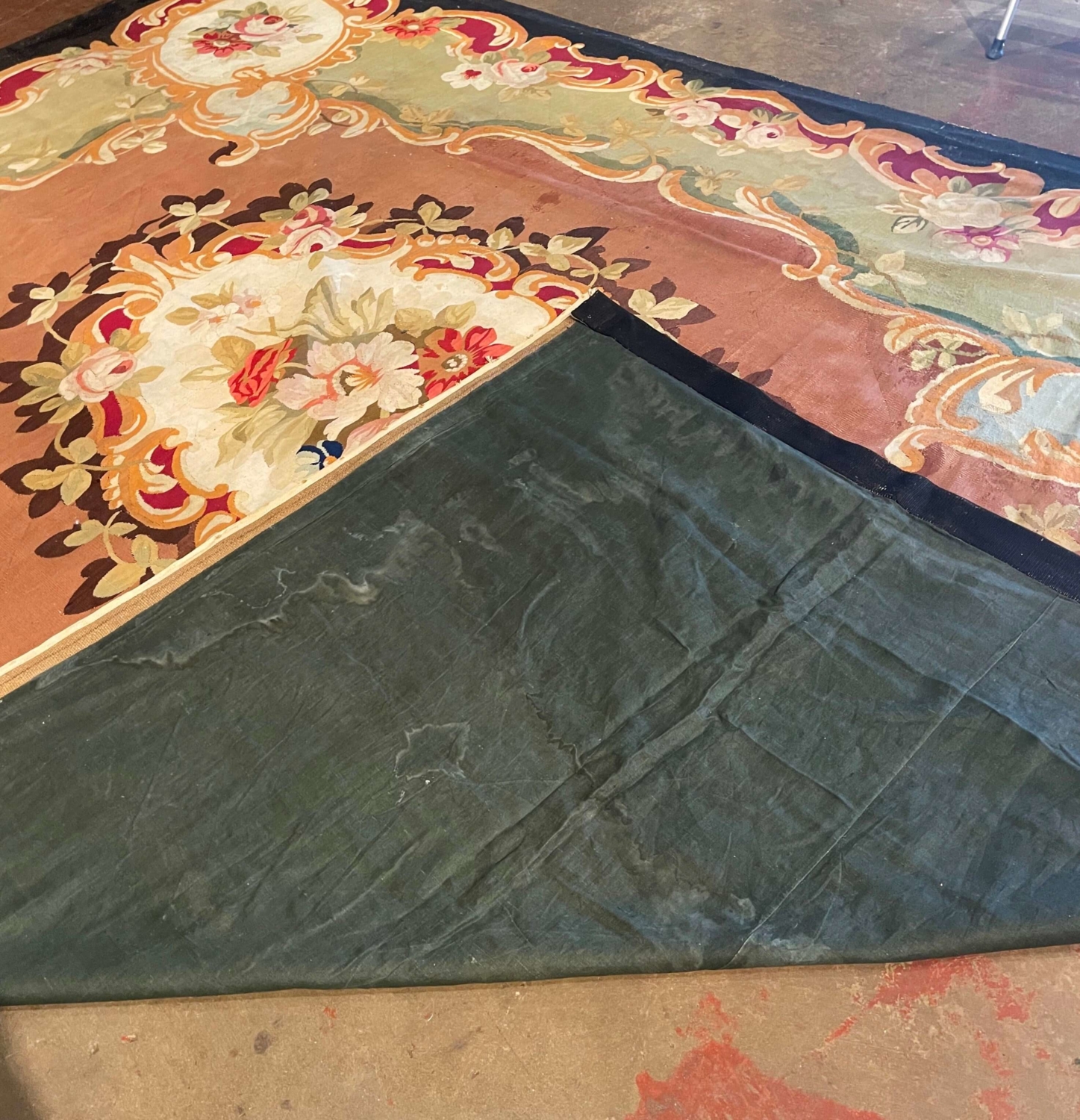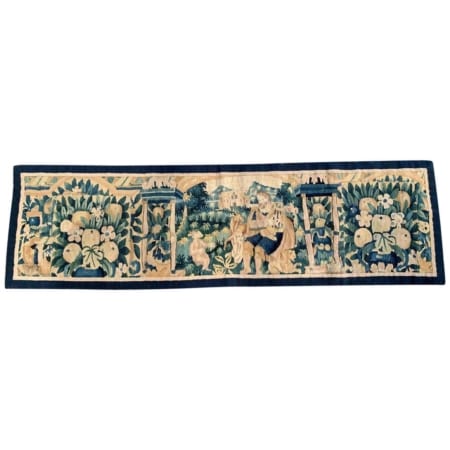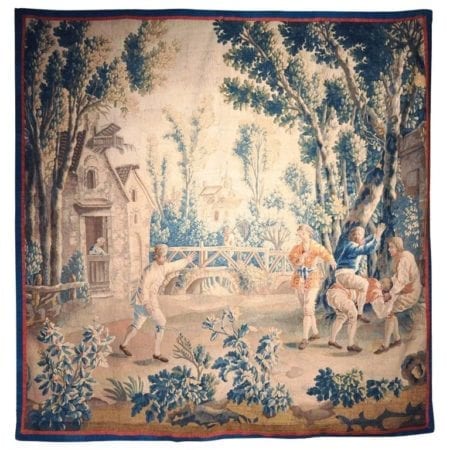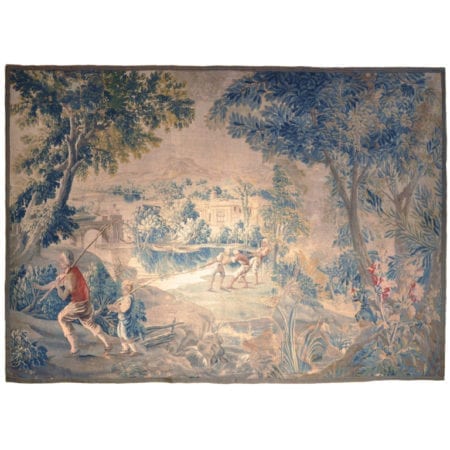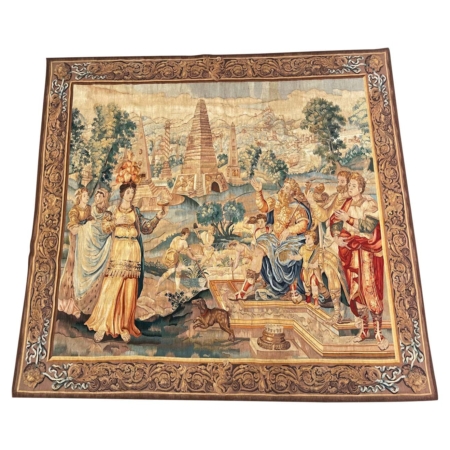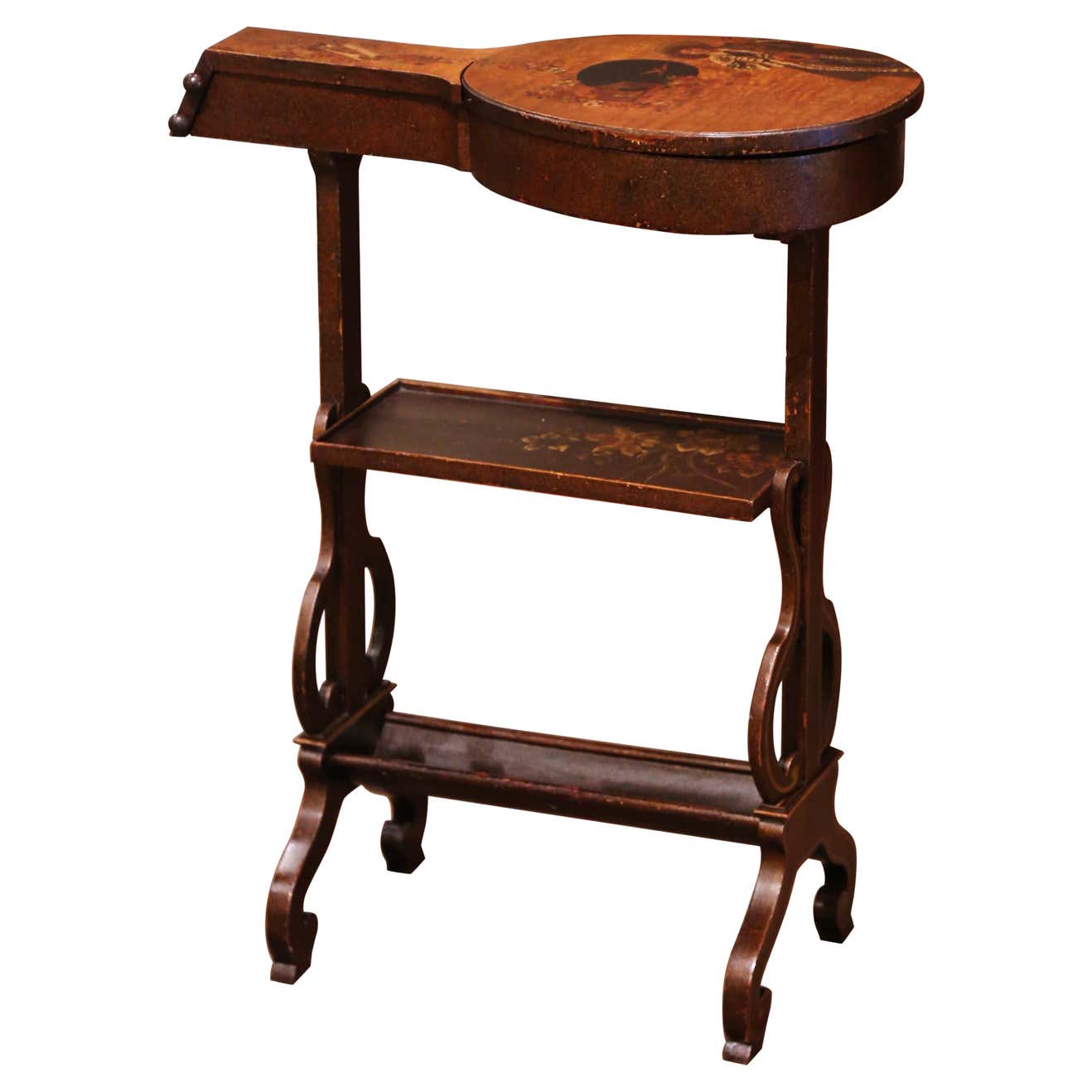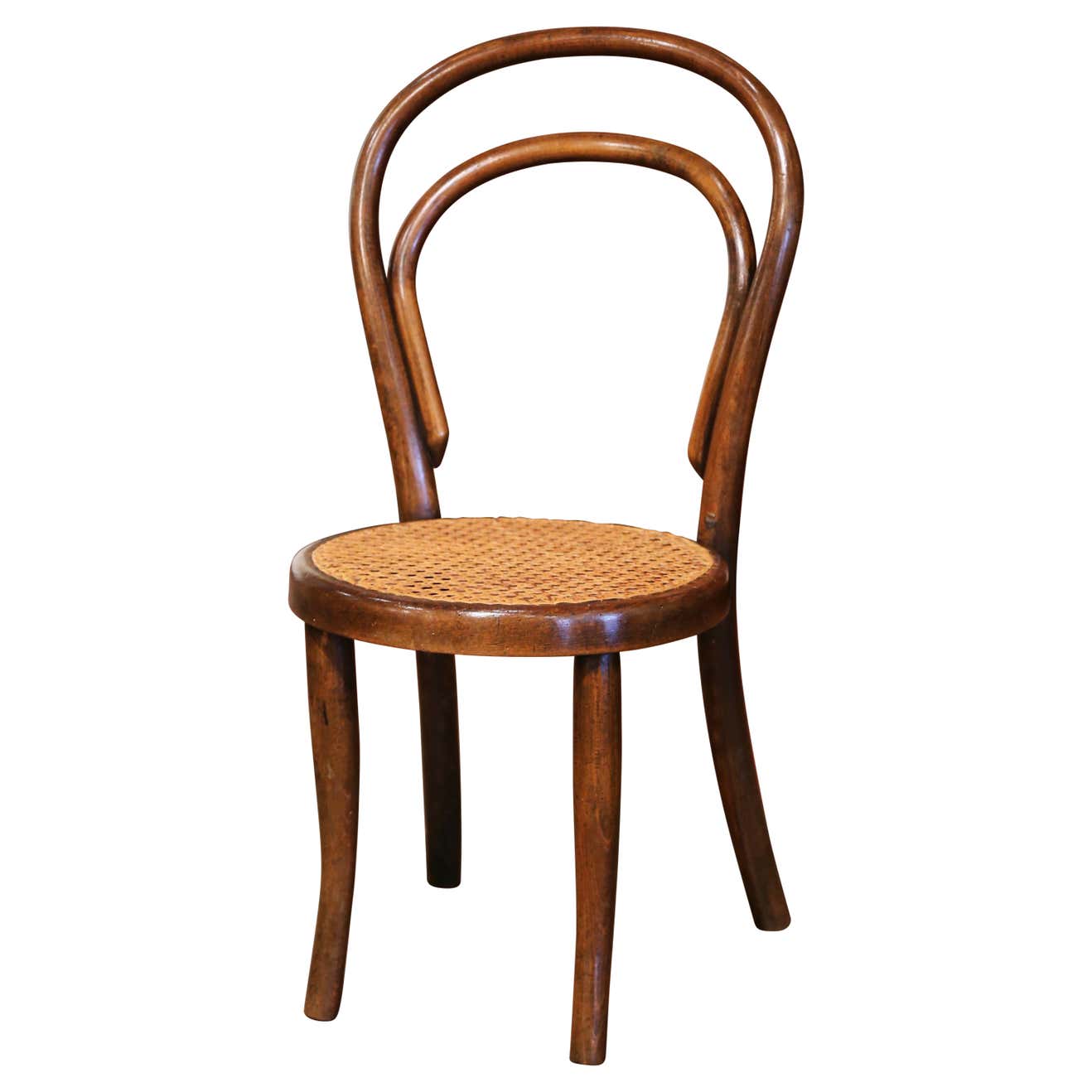19th Century French Napoleon III Savonnerie Aubusson Floor Rug
$15,000
About
Decorate a dining room or living room with this beautifully kept antique Aubusson rug, coming straight from a chateau in southern France. Hand woven in the city of Aubusson circa 1870, the 13 x 10 colorful carpet features scroll and floral motifs throughout, including oval medallions in the corners, and embellished with a central flower bouquet medallion. The rug is in excellent condition commensurate with and use, and adorns rich colors in the red, beige, pale green, and orange palette with black border. Thick canvas backing underside for stability.
Aubusson carpet, floor covering, usually of considerable size, handwoven at the villages of Aubusson and Felletin, in the département of Creuse in central France. Workshops were established in 1743 to manufacture pile carpets primarily for the nobility, to whom the Savonnerie court production was not available. Aubusson carpets were, however, also made for the royal residences. Soon after the production of carpets began at Aubusson, the pile-less tapestry technique previously in use in this district was adopted for so many of the carpets that the word Aubusson has become synonymous with a flat-woven French carpet, and it is not generally realized that piled rugs in numbers have been made there. Many of the early Aubussons were made in modified Oriental designs, some resembling Ushak medallion carpets. Taste soon changed to a range of Renaissance floral and architectural patterns similar to those in use at the Savonnerie and continued to reflect court and republican fashions up to the modernistic painterly concepts of the 20th century.
The Savonnerie manufacture was the most prestigious European factory of knotted-pile carpets, enjoying its greatest period c. 1650–1685; the cachet of its name is casually applied to many knotted-pile carpets made at other centers. The manufacture had its immediate origins in a carpet factory established in a former soap factory (French savon) on the Quai de Chaillot downstream of Paris in 1615 by Pierre DuPont, who was returning from the Levant. Under a patent (privilège) of eighteen years, a monopoly was granted by Louis XIII in 1627 to DuPont and his former apprentice Simon Lourdet, makers of carpets façon de Turquie (“in the manner of Turkey”). Until 1768, the products of the manufacture remained exclusively the property of the Crown, and Savonnerie carpets were among the grandest of French diplomatic gifts. The carpets were made of wool with some silk in the small details, knotted using the Ghiordes knot, at about ninety knots to the square inch. Some early carpets broadly imitate Persian models, but the Savonnerie style soon settled into more purely French designs, pictorial or armorial framed medallions, densely massed flowers in bouquets or leafy rinceaux against deep blue, black or deep brown grounds, within multiple borders.
Measures: 156″ L x 119″ W.
Additional information
| Dimensions | 156" W x 119" H |
|---|---|
| Period | Late 19th Century |
| Style | Napoleon III |
| SKU | 212-16 |
Related products
Country French Interiors, Inc.
1428 Slocum St.
Dallas, TX 75207
(214) 747-4700

